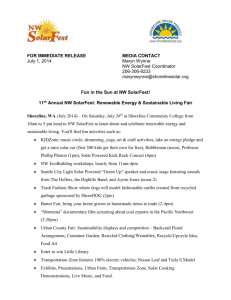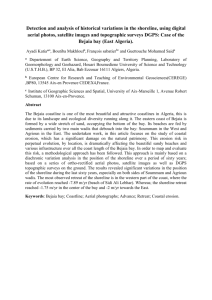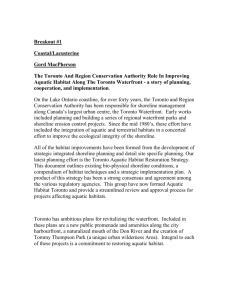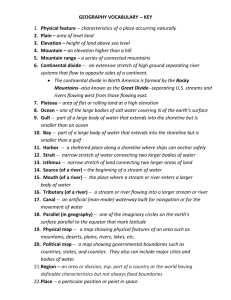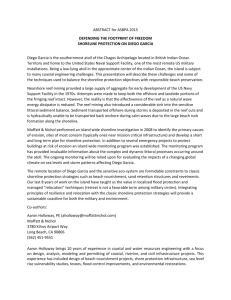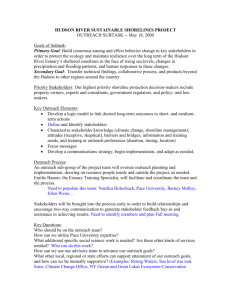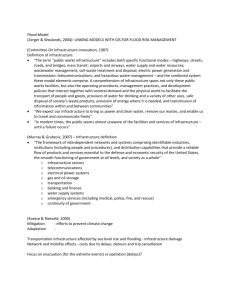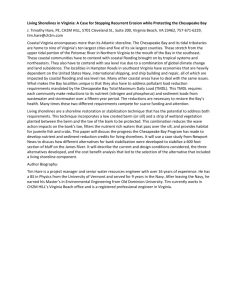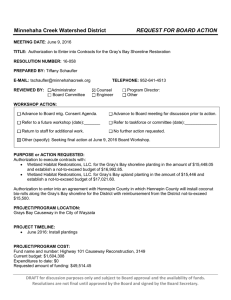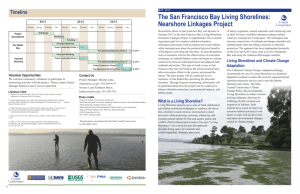Naval Support Activities Shoreline Restoration
advertisement
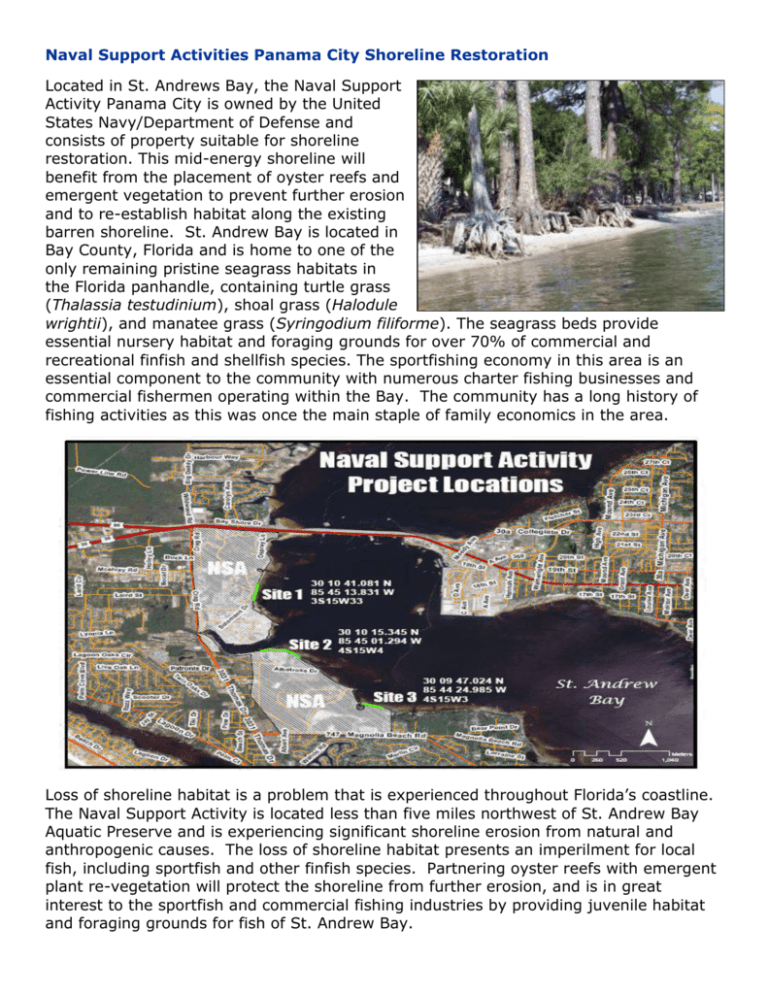
Naval Support Activities Panama City Shoreline Restoration Located in St. Andrews Bay, the Naval Support Activity Panama City is owned by the United States Navy/Department of Defense and consists of property suitable for shoreline restoration. This mid-energy shoreline will benefit from the placement of oyster reefs and emergent vegetation to prevent further erosion and to re-establish habitat along the existing barren shoreline. St. Andrew Bay is located in Bay County, Florida and is home to one of the only remaining pristine seagrass habitats in the Florida panhandle, containing turtle grass (Thalassia testudinium), shoal grass (Halodule wrightii), and manatee grass (Syringodium filiforme). The seagrass beds provide essential nursery habitat and foraging grounds for over 70% of commercial and recreational finfish and shellfish species. The sportfishing economy in this area is an essential component to the community with numerous charter fishing businesses and commercial fishermen operating within the Bay. The community has a long history of fishing activities as this was once the main staple of family economics in the area. Loss of shoreline habitat is a problem that is experienced throughout Florida’s coastline. The Naval Support Activity is located less than five miles northwest of St. Andrew Bay Aquatic Preserve and is experiencing significant shoreline erosion from natural and anthropogenic causes. The loss of shoreline habitat presents an imperilment for local fish, including sportfish and other finfish species. Partnering oyster reefs with emergent plant re-vegetation will protect the shoreline from further erosion, and is in great interest to the sportfish and commercial fishing industries by providing juvenile habitat and foraging grounds for fish of St. Andrew Bay. Direct access by land to the site is for military personnel, however, several boat ramps and marinas are in close proximity to NSA property. The shoreline restoration will provide habitat for the fish of St. Andrew Bay and does stand to benefit all sportfishing activities within the water body. Local fishermen, while not able to access the site directly, will be able to benefit from the project through enhanced fishery in the Bay. Sportsfish species that stand to benefit include but are not limited to: Black drum (Pogonias cromis); red drum (Sciaenops ocellatus); summer flounder (Paralichthys dentatus); southern flounder (Paralichthys lethostigma); spanish mackerel (Scomberomorus maculatus); gray snapper (Lutjanus griseus); lane snapper (Lutjanus synigarus); mutton snapper (Lutjanus analis); red snapper (Lutjanus campechanus); black grouper (Mycteroperca bonaci); gag grouper (Mycteroperca microlepis); sheepshead (Archosargus probatocephalus); sand seatrout (Cyanoscion arenarius) and spotted seatrout (Cynoscion nebulosus). Project FAQs Installation of 25,000 native salt marsh plants o All plants are grown in FDEP’s native plant nursery in Pensacola, Fl. Plant stock is sourced from within the panhandle. Construction of 193 oyster reefs o Reefs will be constructed from ~345 yd3 of recycled oyster shell. Majority of shell was purchased by NSA from a local shucking house. FDEP is contributing 20 yd from the OYSTER (Offer Your Shell To Enhance Restoration) Recycling Program. Project Completion Date: 7/31/2011 Related Links http://www.wjhg.com/news/headlines/Bay_County_Naval_Base_Restores_Shoreline_104484719.h tml http://www.nwfdailynews.com/news/working-87525-newsherald-navy-panama.html http://www.panhandleparade.com/index.php/mbb/article/navy_base_begins_shoreline_restoratio n/mbb7726098/ Funding Sources Fish America Foundation, American Sportsfishing Association, NOAA Restoration Center, U.S. Fish and Wildlife Coastal Program
